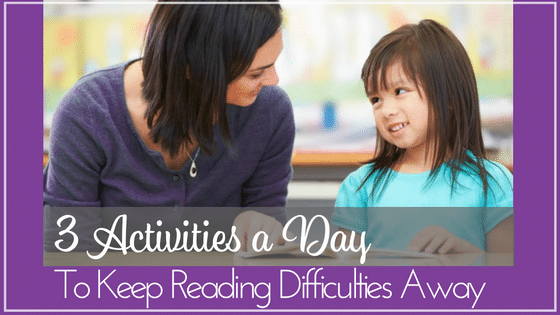
How long does it take to catch a reader who is struggling back up to her peers?
Some reading research reports explain that almost all students with reading difficulties can catch up after 70 or more hours of 1-on-1 instruction.
70 hours!
Know any classroom teachers with that kinda time? For 1 student?
And, while we’re dwelling on the scope of the problem, lemme ask you a question:
About how many American 4th graders are NOT proficient at reading grade level materials?
- 13%?
- 33%?
- 63%?
Sadly, the latter is correct.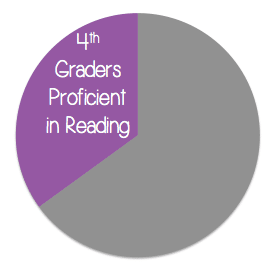
Yes, well over 60% of U.S. 4th graders are NOT proficient at reading, according to the National Assessment of Educational Progress.
Don’t check out, now, though! I know this seems like the same-old bad news.
But today, this story ends differently….
You CAN Prevent Reading Difficulties
Based on my experience as a reading tutor, reading researcher, and staff developer, I can assure you that we don’t have to settle for statistics like the above.
Yes, you can expect to get almost all your students to read well in much less than 70 1-on-1 hours.
In fact, if you adopted the 3 activities described below, you could expect almost all of your students in regular education to increase their reading skills at least half-a-year….in about 6 weeks.
Many of them will actually jump half-a-year in achievement in less than 2-3 weeks!
Truly!
I’ve witnessed this type of growth or better with the hundreds of students I tutored myself. I've also witnessed accelerated growth as other teachers use these techniques.
For instance, one of the first teachers (Laura) I shared these activities with was especially concerned about a 1st grade girl in her class, in a 99% free-and-reduced-lunch school. This young girl (Trinity) was behind in all reading measures besides sight words.
Even worse, Trinity was a daily behavior problem. The week before Laura began working with Trinity she had been suspended for choking a classmate.
😮
Yes, a first grader.
But Laura didn't quit on Trinity–she adopted the 3 reading activities I suggested to her and Trinity's reading suddenly began to come together.
For example, her reading rate went from 37 words per minute to over 60 words per minute.
In less than 2 weeks!
While not every child has this exact same rapid trajectory, I have watched and heard about oodles of other teachers who have gotten similar quick gains in their students’ reading achievement–with the primary toolkit of the following 3 activities.
Some of the students are K beginners.
Some are struggling 7th graders.
Nevertheless, these 3 activities work–over and over–again to boost their underlying decoding skills. Then their reading achievement accelerates quickly.
Imagine how your life and the life of your students might change if you knew just 3 reading activities that turned all students into readers.
In weeks….instead of months or years?

1 Boy. 3 Activities. All the Difference.
Yes, I routinely adopt 3 key activities with every beginning or struggling reader and quickly witness their reading achievement accelerate.
The story of one of my recent students can be our guide through a description of the 3 activities. Jacob* was in 1st grade when his parents asked me to tutor him in reading.
Dad said,
“Jacob really resists reading. It’s not really an exaggeration to say that sometimes he ends up crying and in the fetal position because he’s so upset about having to read.
It’s really hard to get him to try to read.”
🙁
Jacob is smart and he knows a lot of stuff about the world. He is also smart enough to realize that his peers were learning to read better and better. And he was not.
He had a good bank of high frequency words memorized, but he didn’t know how to attack an unfamiliar word.
I bet he realized nothing was working for him and he’d lost hope.
I was sad to hear about Jacob’s struggles and a bit concerned because that’s pretty young to quit on reading.
3 Activities a Day to Keep Reading Difficulties Away
Nevertheless, I eagerly waited for my first session with Jacob after an initial assessment.
Read on to find out what Jacob accomplished in only 3 hours of reading instruction with special emphasis on just the following 3 activities.
At the first lesson we hit a MAJOR snag which I will explain but, fortunately, that wasn’t the end of the story…
To work with Jacob, I took out the same toolkit I use with every student. This toolkit centers around 3 key Word Work activities that move the needle.
Every time.
1. Switch It
Jacob started out with Switch It–trying to switch a chain of words, one letter-sound at a time.
(Example diagram of the Switch It routine:)
For example, he switched “swim” to “swam.”
And I reminded him of the word in context: “I will swim in the pool today, but yesterday I swam in the river.”
Then he switched “swam” to “swag.”
Then “swag” to “swig.”
Then “swig” to “twig.”
At first he needed my help with every word. I extended and exaggerated the sounds in each word as I drew my finger along each letter-sound simultaneously.
“Well, we need to switch /ssssssssswwwwi—g/ to /Twwwi—g./”
“Which letter-sound should you take away?”
This attention to the visual, auditory, and kinesthetic helped him make connections at the sound-symbol level that Jacob really never understood well. (See more about Switch It here.)
He had only partial access to the way our written code works–that letters represent sounds in words.
However, he wasn’t facile with it. And he needed my help to do basic phoneme manipulation in CCVC (Consonant-Consonant-Vowel-Consonant) words.
But before the end of the first session, he needed my help even less. For instance, I didn’t have to drag my finger across every letter-sound as I had initially.
And he began to segment each word effectively on his own after making the correct switches:
/t/ /w/ /i/ /g/
I was pleased. He was making progress already just after 5-8 minutes of instruction.
Watch Switch It in action with another, preK student just learning the Switch It ropes:
But what had we accomplished with Jacob?
These are the skills that Jacob was working on in an integrated manner during the brief Switch It instruction:
- The concept of the alphabetic principle (that our written language is a code for sounds),
- Left-to-right processing,
- Phonemic awareness, especially manipulation and segmentation,
- Letter-sound knowledge, especially the unique features of those pesky short vowels,
- Decoding,
- Spelling,
- Vocabulary knowledge, and
- Cognitive flexibility–a key for a life-long strategy for word attack. (When you see an unfamiliar word, what do you do? I bet you try a couple of sounds where you’re unsure and see if one sound in particular sounds like a possible real word. Is the word, “refulgent” pronounced /re – ful – gent/ or /ree – ful – gent/? Hmmm…Methinks the former.)
Another way to look at all that he accomplished is to consider the Common Core State Standards that were addressed with this lesson, today, and in the coming weeks.
Common Core State Standards (CCSS) Taught During Switch It
Which CCSS was Jacob addressing during Switch It?
RF.K.1 Demonstrate understanding of the organization and basic features of print.
RF.K.1.a Follow words from left to right, top to bottom, and page by page.
RF.K.1.b Recognize that spoken words are represented in written language by specific sequences of letters.
RF.K.1.d Recognize and name all upper- and lowercase letters of the alphabet (my emphasis on letter-sounds, though)
RF.K.2. Demonstrate understanding of spoken words, syllables, and sounds.
RF.K.2.b Count, pronounce, blend, and segment syllables in spoken words.
RF.K.2.d Isolate and pronounce the initial, medial vowel, and final sounds (phonemes) in 3-phoneme (CVC words).
RF.K.2.e Add or substitute individual sounds (phonemes) in simple, one-syllable words to make new words.
RF.K.3 Know and apply grade-level phonics and word analysis skills in decoding words.
RF.K.3.a Demonstrate basic knowledge of one-to-one letter-sound correspondence by producing the primary or many of the most frequent sound for each consonant.
RF.K.3.b Associate the long and short sounds with common spellings (graphemes) for the five major vowels (focus on short vowels using Read It; Sort It–described below–focuses on long vowels).
RF.K.3.c Read common high frequency words by sight (especially used mostly decodable high-frequency words such as “did” or “will”).
RF.K.3.d Distinguish between similarly spelled words by identifying the sounds of the letters that differ.
L.K.1.a Print many upper- and lowercase letters.
L.K.2.c Write a letter or letters for most consonant and short-vowel sounds.
L.K.2.d Spell simple words phonetically, drawing on knowledge of sound-letter relationships.
L.K.4 Determine or clarify the meaning of unknown and multiple-meaning words and phrases based on kindergarten reading and content.
L.K.4.a Identify new meaning for familiar words and apply them accurately.
L.K.5 With guidance and support from adults, explore word relationships and nuances in word meanings.
Whew! That’s a lot of standards to meet.
Rather than using an activity that targets just one or two reading standards–and then more and more activities to reach all the standards–you can adopt an activity like Switch It where at least 19 CCSS are practiced successfully.
But, indeed, through Switch It Jacob gained much across all of these standards.
He intially couldn’t manipulate 4-sound words without my help. That suggests he wasn’t really strong with his ability to match sound and symbol. He also was rusty on the differences between “e” and “i” as well as “o” and “u.”
But by the end of the first Switch It practice, he could manipulate 4-sound words without my help. He also became more accurate selecting the short vowels for each switch.
Jacob was moving along at a good clip like almost every student who tries these activities.
Because so many skills are accomplished in Switch It–and, indeed, in all of the 3 activities I’m sharing today–teachers get more accomplished.
And with less effort.
That’s why we call this approach Reading Simplified.
So, we moved onto Read It, another important tool in the Reading Simplified arsenal.
2. Read It
Like almost all readers who struggle, Jacob didn’t attack unfamiliar words consistently with a Blend As You Read approach. I wanted him to add sounds together as he progressed through each word, blending as he went.
For instance, rather than reading the word, “plug” like this: /p/ /l/ /u/ /g/ and then trying to blend all the sounds together to make a meaningful word at the end of the segmenting, I wanted him to Blend As He Read:
“/pllllu—g/”
“plug!”
The fastest way to develop this Blend As You Read skill is with Read It (learn more here).
Thus, after Switch It, we turned the dry erase board over, I let him pick his favorite dry erase marker color, and he read CVCC and CCVC words I wrote on the dry erase board.
I wrote “lamp” and covered over the last 2 sounds with a card. I said,
“Put these 2 first sounds together.”
“Hold the /a/”….
And I revealed the next letter-sound, “m.”
“Add this sound….”
And I revealed the final letter-sound “p.”
Finally, he read the word “lamp.”
That was the first in several practices using the Blend As You Read approach. It’s an approach he used during Read It, but also during every Guided Reading opportunity.
“Jacob, can you use that word in a sentence?” I might say as he prepares to write the word.
Or, I might use it in a sentence myself–depends on the difficulty of the word. More unusual words I would be sure he could define or use in a sentence.
There’s more to Read It, though, than just the Blend As You Read approach…
Next, Jacob wrote the word on the dry erase board and said each sound as he wrote each sound:
/l/ /a/ /m/ /p/.
For the grand finale, Jacob erased each letter-sound in the word, again, saying each sound as he erased:
What did he accomplish in these 5-8 minutes of Read It?
Glad you asked!
Jacob was refining and practicing this complete set of early reading skills:
- The concept of the alphabetic principle (that our written language is a code for sounds),
- Left-to-right processing,
- Phonemic awareness, especially blending and segmentation,
- Letter-sound knowledge, especially the unique features of those pesky short vowels,
- Decoding, especially the life-long strategy of Blend As You Read,
- Spelling, and
- Vocabulary knowledge.
A video example of 2 beginning readers trying Read It may help:
As in the case of Switch It, Jacob also covered a lot of CCSS ground during Read It during our first lesson and in the next few lessons to come.
Here’s a snapshot of just some of the K CCSS he was learning during Read It:
Common Core State Standards Taught During Read It
Across his first few lessons, during Read It, Jacob was accomplishing all of these Common Core State Standards:
RF.K.1 Demonstrate understanding of the organization and basic features of print.
RF.K.1.a Follow words from left to right, top to bottom, and page by page.
RF.K.1.b Recognize that spoken words are represented in written language by specific sequences of letters.
RF.K.1.d Recognize and name all upper- and lowercase letters of the alphabet (my emphasis on letter-sounds, though)
RF.K.2. Demonstrate understanding of spoken words, syllables, and sounds
RF.K.2.b Count, pronounce, blend, and segment syllables in spoken words.
RF.K.2.d Isolate and pronounce the initial, medial vowel, and final sounds (phonemes) in 3-phoneme (CVC words).
RF.K.3 Know and apply grade-level phonics and word analysis skills in decoding words.
RF.K.3.a Demonstrate basic knowledge of one-to-one letter-sound correspondence by producing the primary or many of the most frequent sound for each consonant.
RF.K.3.b Associate the long and short sounds with common spellings (graphemes) for the five major vowels (focus on short vowels using Read It; Sort It focuses on long vowels).
RF.K.3.c Read common high frequency words by sight (In Reading Simplified we especially use mostly decodable high-frequency words such as “did” or “will”).
L.K.1.a Print many upper- and lowercase letters.
L.K.2.c Write a letter or letters for most consonant and short-vowel sounds.
L.K.2.d Spell simple words phonetically, drawing on knowledge of sound-letter relationships.
L.K.4 Determine or clarify the meaning of unknown and multiple-meaning words and phrases based on kindergarten reading and content.
L.K.4.a Identify new meaning for familiar words and apply them accurately.
L.K.5 With guidance and support from adults, explore word relationships and nuances in word meanings.
A whopper of an activity! Just like Switch It, much is accomplished during Read It.
Much of the activities overlap–such as the emphasis on sound-symbol relationships and phoneme segmentation. However, Read It adds the additional, foundational skill of blending that Switch It does not address.
Both are reinforcing letter-sound knowledge. Switch It is especially good at developing phoneme manipulation and cognitive flexibility whereas Read It is especially good at developing the life-long decoding strategy of Blend As You Read.
3) Sort It
And for the grand finale, may I present Sort It?
Jacob’s pre-assessment revealed that he recognized NO Advanced Phonics knowledge, such as “oa” for long “o” or “er” for the /er/ sound.
Sort It is the fastest way to rectify that weakness, so we started it Jacob’s first session. (See here for more on Sort It.)
I knew I would be pushing him to get more out of the 1 hour than he probably was used to accomplishing, given his strong aversion to reading. So, I shared with him when we began that he would need to do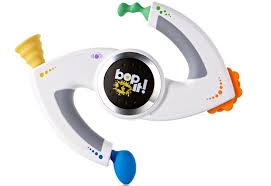 3 tasks and then he’d get a break playing with Bop-It.
3 tasks and then he’d get a break playing with Bop-It.
That objective seemed to appeal to Jacob. So, when we moved to the third and final Word Work activity of the day, I was feeling pretty good about his motivation.
He hadn’t complained, sighed, resisted, refused or even frowned yet.
So we forged ahead with Sort It. I told him that he was going to spend the week learning the sound /oa/ and its main spellings. I asked him if he had any idea about how many spellings there are for sound /oa/.
He didn’t know.
Then I introduced the Key Sentence for the /oa/ sound,
“Go home to show the boat to Joe.”
I pointed out how each column of the Key Sentence was a different spelling.
“This Key Sentence is a memory trick, or mnemonic, to help you remember the main spellings of the /oa/ sound.”
Jacob began reading each word on the list, sorting it, and saying each sound as he wrote:
/r/ /oa/ /d/
and
/sh/ /ow/
etc.
He completed at least 1 word for each column and tried to recall the Key Sentence one last time.
Because I was concerned about his motivation, I didn't want him to finish the entire Sort It list in this first session. However, many children can handle reading 10-12 words in the context of a 1-on-1 or small group setting.
Finally, Jacob had completed his 3 big tasks and I'd witnessed the first upward tick in his:
- phonemic awareness (segmenting, manipulating, and blending 3- and 4-sound words),
- strategy for decoding (the Blend As You Read approach),
- awareness that one sound can have multiple spellings, and
- a growing knowledge of the spellings of the /oa/ sound.
Jacob had covered a lot of CCSS as with the previous 2 activities. (See a list of CCSS met with Sort It here.)
Watch as another 1st grader is taught the Sort It activity for the first time:
Additional Validation for the 3 Key Activities
Looking for another source to validate the value of these activities besides the CCSS? 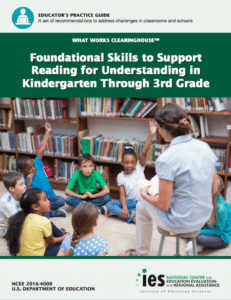
Then check out the recently released practice guide for K-3 reading from an expert panel from the U.S. Institute of Education Science.
Out of their 4 recommendations, 2 tightly connect to the purposes and benefits of Switch It, Read It, and Sort It:
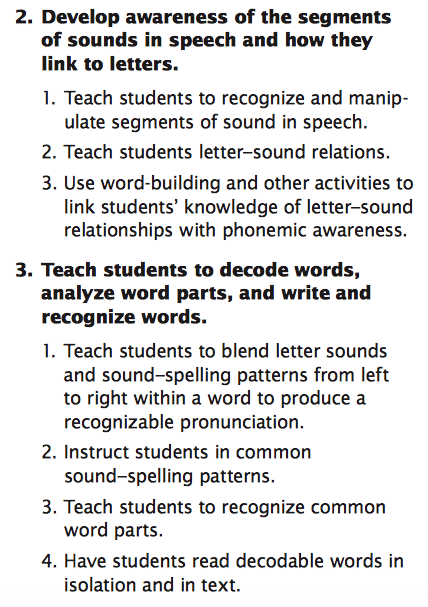 The 2 main recommendations from the I.E.S. practice guide and all of the sub-recommendations shown are directly taught and mastered through Switch It, Read It, and Sort It.
The 2 main recommendations from the I.E.S. practice guide and all of the sub-recommendations shown are directly taught and mastered through Switch It, Read It, and Sort It.
And now back to Jacob!
After his burst of hard work, he got to play with the Bop-It and was pretty determined to improve his score.
Next, I wanted to end with him reading an /oa/ sound text so he would have an opportunity to transfer his new decoding skills and knowledge in the context of a real story.
I let him choose between 2 /oa/ sound texts: starfall.com's Soap Boat or Joe and Joan (pictured below).
I thought we were home free when I told him he just had 2 more things to do before he could play Bop-It again and head home.
BUT!!
Just then at the sight of the reading material, Jacob sunk his head in his arms on the table and began to cry!
Oh dear.
I was surprised because he hadn't resisted the work or sighed or drug his feet on any task up to that point.
I know what you're thinking,
“This is a really bad sign. Perhaps these activities aren't really that great after all…”
Ha! A reasonable hypothesis given the story thus far.
But wait for the end of the story!
Looking back, I believe Jacob was experiencing the old frustration as he had before with the thought of reading a new text. He knew reading was really tough work and he didn't yet know his abilities had changed.
He didn't know he was already better positioned to read.
His parents also realized that Friday afternoon after school without a snack wasn't the best set-up for an initial tutoring session!
Next week he was prepared with snack and drink already downed before the session.
And I haven't seen crying or sadness since.
For the next 3 sessions, I continued to do the same 3 Word Work activities described above with Jacob:
- Switch It, with progressively more difficult words from a phonemic perspective (moving towards CCCVCC).
- Read It, also with progressively hard 1-syllable words, and
- Sort It–covering one sound per week in this order: /oa/, /ee/, and /ay/.
Additionally, Jacob read texts with my support each week that focused on the target sound. He also re-read selections of texts to gain fluency and automatic word recognition.
This time spent reading aloud with feedback, both with me and his parents, is extremely important!
(I'm not “counting” student read aloud time as one of the 3 key activities because:
a) it's already widely believed that listening to a student read aloud is beneficial, and
b) the Word Work activities associated with Reading Simplified are more distinct as compared to common practice for Word Work or even guided reading time. (For more on guided reading, see this.)
In other words, if we kept doing what we're currently doing, but zeroed in on just these 3 Word Work activities, we'd still see huge gains in our students' abilities to read.
The Boy Who Cried Became the Boy Who Reads
So whatever happened to Jacob you ask?
At the beginning of his 4th session, his mother explained how Jacob's reading and his motivation had changed. She said,
“He doesn't resist reading anymore. And I'm finding he's able to handle harder and harder texts.
I'm really amazed at how fast he has improved.”
I wasn't surprised at how fast he had improved because I see it almost every time. I was surprised that his learned helplessness faded so quickly, as that usually takes longer to wear away.
Friend, I am not an award-winning teacher. And I don't share Jacob's success to brag about myself.
But I have discovered how the 3 key activities of Switch It, Read It, and Sort It always unlock reading for students who are beginning or struggling. I share this story because I believe that if you tried these 3 activities, too, you would find many of more of your students would have an “aha!” about reading that would push their achievement ahead rapidly.

There are a few other techniques and activities that make up the Reading Simplified approach, but these 3 activities alone are the core, my bread-and-butter.
They are also the high leverage activities I included in a research-based program through the University of North Carolina that was shown to have significant impact for struggling K-1 readers in all reading measures, including comprehension. (Read more about these studies here, here, here, and here.)
Will you try 1 of them today?
Please share in the comments below which activity (Switch It, Read It, or Sort It?) you will try or have tried.
I'd love to continue the discussion with you!
* Student's name and minor details changed to protect privacy.

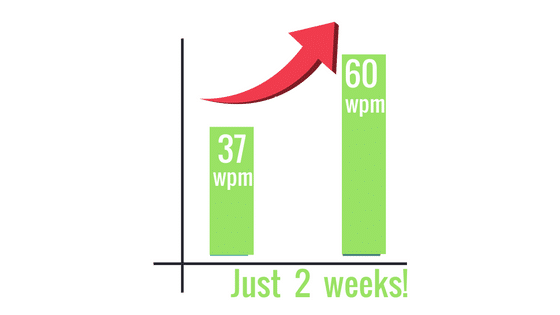
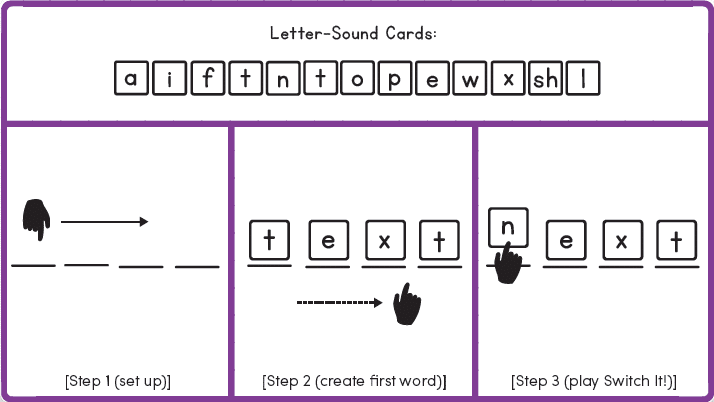
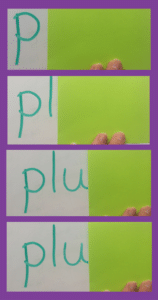
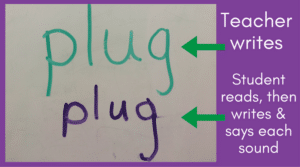
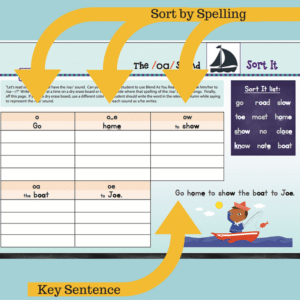
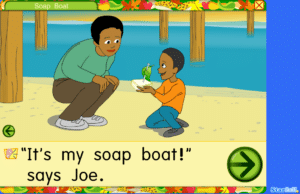
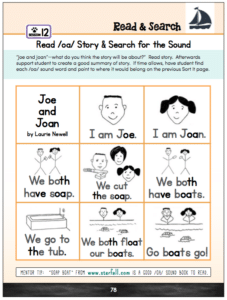
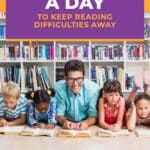
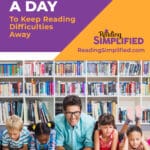
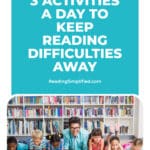
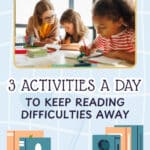

Will you be doing this challenge again? I have a couple darlings I would love to “experiment” with!
Hi Shelle! Yes!! I hope to run the next Level Up Your Readers’ Achievement in the Next 5 Days challenge in early Jan. Do you have a week to suggest that may be best? It would be great to see you then!!
Also, if you haven’t checked it out yet, this post about Switch It could be helpful, along with the free word list: https://readingsimplified.com/integrate-dont-isolate/
Thanks for the good question!
Is there any way to purchase the Sort It resources for all of the other sounds? My principal is not ready to make the jump yet, but I am seeing amazing results and need a little more data to show her.
Hi Tammy! Thanks for your interest! Most of our materials are on reserve for members of our Reading Simplified Academy and not for individual sale. You can snag a sample Sort It packet here: https://readingsimplified.com/power-up-phonics-activities/
Is there another place to access the files you talk about and the videos for the five day challenge? I can see them on fb but I get to work early and would like to watch them again at work and we cannot access fb.
Melisa, thanks for the good question! Yes, I will be creating 1 website where all the video recordings are kept, along with PDFs of the email trainings and student resources. I’ll be sending the link out to everyone who’s signed up for this challenge on Fri. morning. But this is a special bonus offer to those who participated in the challenge and will only be available for free through Monday night.
Also, the files I mention in the videos are immediately accessible in the private Facebook Group, Level Up Your Readers’ Achievement in the Next 5 Days. Look under the header in the FILES tab.
Here’s the link in case you’re not signed up to ensure you get the email tomorrow: readingsimplified.leadpages.co/level-up-readers/
Hi,
I read on another one of your posts, prerequisite skills a student should have before teaching “Switch It”. Do I remember correctly 70% sound/symbol proficiency? Thanks for all you share.
Actually, the prerequisite skills for Switch It are 1) about 5 letter-sounds known and 2) ability to segment first sound in a word.
thank you so much Reading Simplified. I earned a lot as a Reading teacher from Philippines. Since I follow your page. I had been helping my learners to read in just few days. Our Struggling Readers in Secondary schools is increasing yearly, with this, I am also sharing the strategies with my colleagues. Looking forward to receive more tips and materials for free